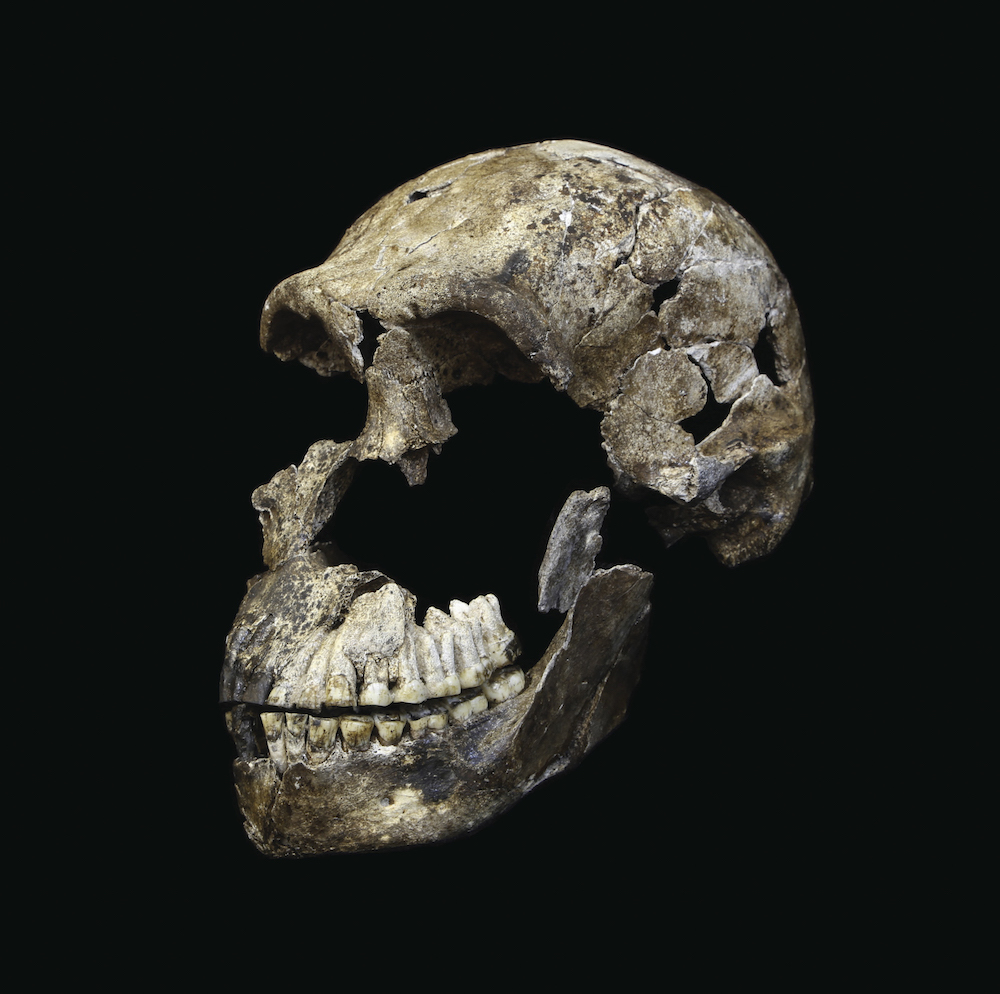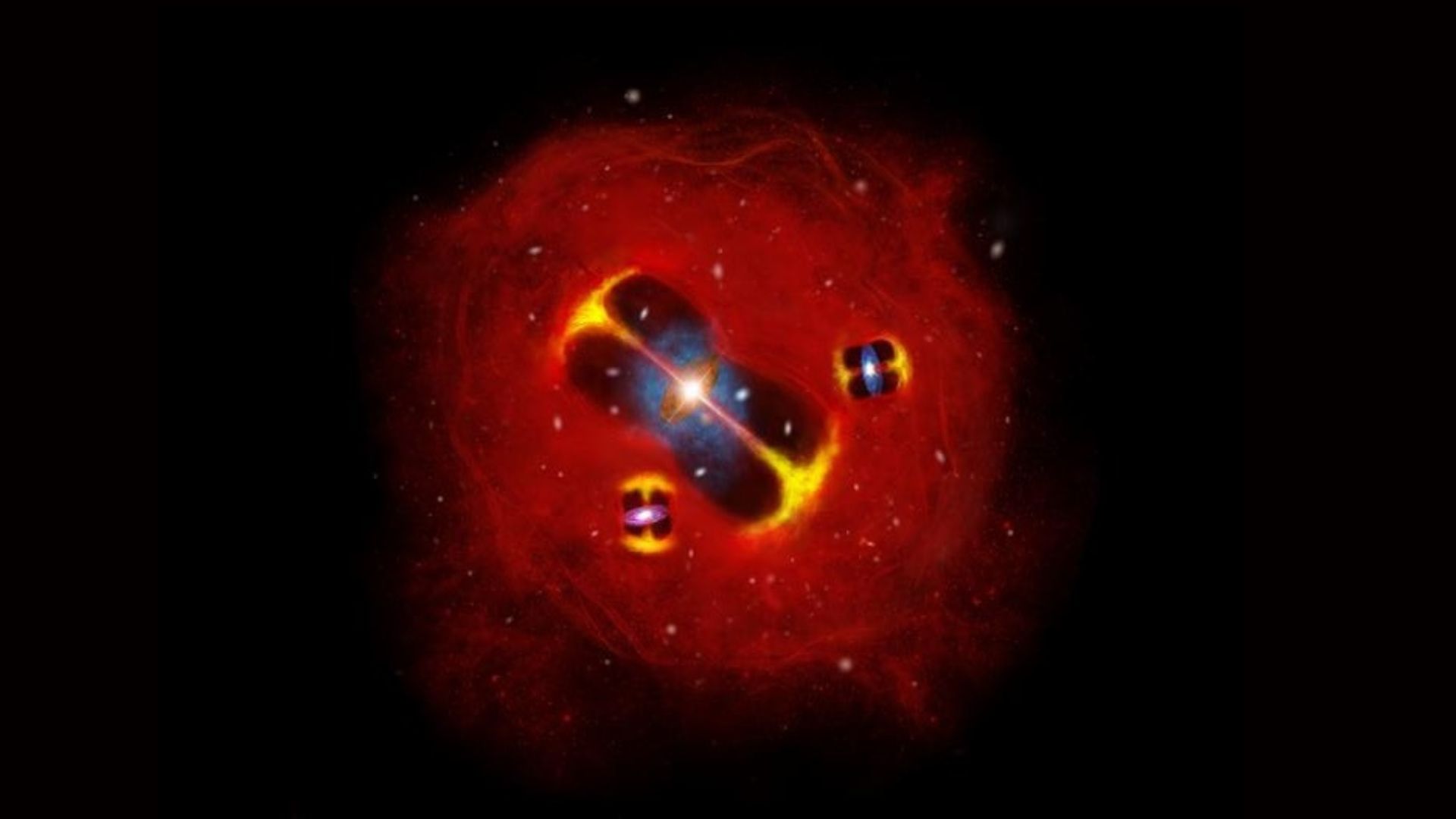Small-Brained Human Cousin Was Surprisingly Smart

Skeletons of Homo naledi, the primitive-looking relative to modern humans, discovered four years ago in South Africa lived more recently than was previously thought, according to a new study. Paleoanthropologists now also say the species was likely much smarter than the current understanding of the primitive hominins would suggest.
When researchers first examined bones of the previously unknown small-brained hominin, which were found in the Rising Star cave system near Johannesburg in 2013, they assumed the species likely co-existed with Homo sapiens' predecessor, Homo erectus. However, in a new study, researchers conducted six different dating techniques, and all arrived at a surprising conclusion, the investigators said. [Homo Naledi in Photos: Images of the Small-Brained Human Relative]
"We reported the date [of] between 335,000 years and 236,000 years [old]," said geologist Eric Roberts, an associate professor at Australia's James Cook University and one of the authors of a series of papers about Homo naledi published online May 9 in the journal eLife.
"That means that this small-brained hominin was sharing a landscape with early Homo sapiens, members of our own species," Roberts told Live Science.
Big vs. small brains
But their age was not the only surprising thing about the discoveries in the Rising Star cave. The skeletons were found crammed in the Dinaledi chamber of the cave. The scientists extracted 1,500 fossil specimens of Homo naledi belonging to at least 15 individuals from only a few cubic meters of sediment, suggesting someone must have put them there deliberately.
"We think that naledi was entering these deep parts of the caves and leaving bodies there," said John Hawks, an anthropologist at the University of Wisconsin-Madison, who leads the research. "We can rule out other explanations for how the bones got in there. Like carnivores — there were no scratches on those bones. Thousands of bones and not a single scratch. It didn't wash into the cave either."
Until the discoveriesin the Rising Star cave, paleoanthropologists thought that complex behaviours, such as burying the dead, only occurred with the development of larger brains. Furthermore, the chamber where the bones bones were found is far away from the entrance to the cave, where no daylight reaches.
Get the world’s most fascinating discoveries delivered straight to your inbox.
"It's completely dark there, total pitch black," Hawks told Live Science. "They must have had fire. We have not found physical evidence of fire, and it's one of the things that we are really pursuing. If they were using fire with any regularity, I think we will find evidence of it."
Even more unknowns
Hawks said the South Africa discovery raises more questions than it answers. Evidence of fire from 1.1 million years ago was, in fact, found at a site only half a mile (800 meters) away from the Rising Star cave. And until the breakthrough discoveries of Homo naledi, scientists did not question that this fire was being used by the bigger-brained ancestors of Homo sapiens.
"The stereotypes say that it's complex brains that makes complex behaviors possible," Hawks said. "It's possible, however, that complex brains can be small, that it's the organization of the brains and not the size. In fact, in living humans, the size of the brains is not very strongly connected with the functional things that the brain does, so why should we be expecting it to be true in the past?"
Similar to the fire, the delicate Homo naledi may have also produced ancient tools discovered in the area that were previously ascribed to larger-brained Homo species, according to Hawks. [The 10 Biggest Mysteries of the First Humans]
In the 63-page publication in eLife, the researchers also revealed that they had recently discovered an entirely new chamber in the Rising Star cave, called Lesedi, in which they found an almost-complete and well-preserved skeleton of an adult Homo naledi male.
"It is such a striking discovery. It's like Lucy," an Australopithecus skeleton discovered in Ethiopia in 1974, Hawks said. "Suddenly, you have an individual and his name is Neo — that's a Sesotho [a South African language] word meaning 'a gift.' We can see his face. The bones are very thin, fragile, but incredibly well-preserved."
A key discovery
Paleoanthropologists turned their attention to the Rising Star cave only in 2013. The system of narrow, underground corridors has been popular amongst cavers for decades, but not until four years ago did information about ancient-looking bones in the cave reach the right ears. When paleoanthropologists finally gained access to the cave, they quickly realized that they had hit the jackpot, the scientists said.
"Our first discovery in 2015 was a major worldwide story, because it was the largest discovery of fossils of any primitive hominin in Africa ever found," Hawks said. "Inside of these chambers, remain thousands of hominin bones, and we are moving to investigate the rest of the system.
"It is more than 2 kilometers [1.2 miles] of underground tunnels," he added, "and we have, near the surface, deposits that we want to investigate by digging to see whether we can find evidence of Homo naledi's behavior closer to the exit of the cave."
No DNA has been recovered from the skeletons, but the scientists said they think Homo naledi shared a common ancestor with modern humans about 2 million years ago. Chimpanzees, humans' closest living relatives, deviated from the Homo sapiens evolutionary branch 5 million years earlier.
Completely unknown only five years ago, Homo naledi is currently the best-documented hominin species, and with the treasure of bones still waiting to be retrieved, Hawks said he has no doubt the world will continue to hear about the cousin of modern humans for many years to come.
Original article on Live Science.



